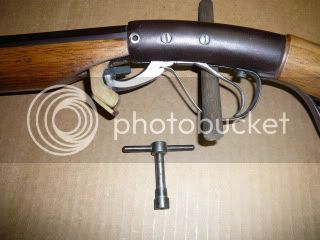- Joined
- Dec 5, 2009
- Messages
- 271
- Reaction score
- 183
I’ve bitten the bullet and have a under hammer rifle on the way to me. I want to put a pouch set together for it. According to the description of the rifle their time period was the early to mid 1800’s. Would a powder horn still have been the correct way to carry powder at that late date or had the flask really taken over?
Mine is a .32 caliber and my intended use is day hunting for small game. I’m considering a small belt pouch along the lines of the Lemuel Lyman style, although the original was in use 100 years earlier. I don’t need much more of a pouch for the fist full of tiny balls, a tin or caps, some patching material and a patch screw as I keep being told the little bore needs a fair amount of swabbing to keep fouling to a minimum.
Mine is a .32 caliber and my intended use is day hunting for small game. I’m considering a small belt pouch along the lines of the Lemuel Lyman style, although the original was in use 100 years earlier. I don’t need much more of a pouch for the fist full of tiny balls, a tin or caps, some patching material and a patch screw as I keep being told the little bore needs a fair amount of swabbing to keep fouling to a minimum.





